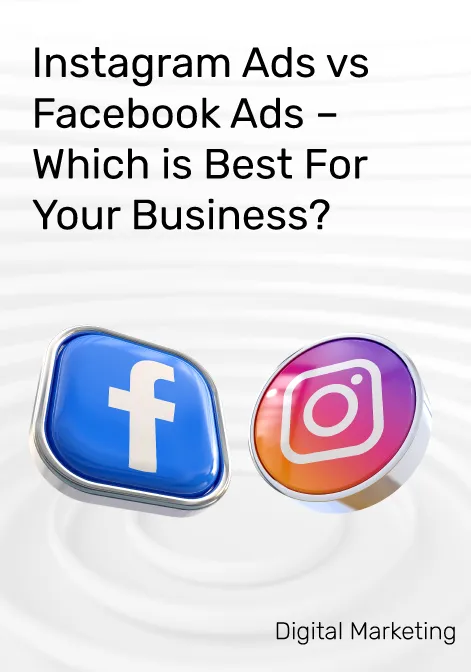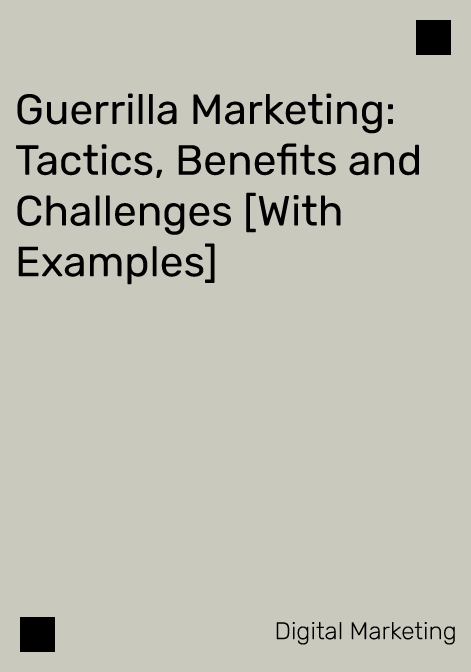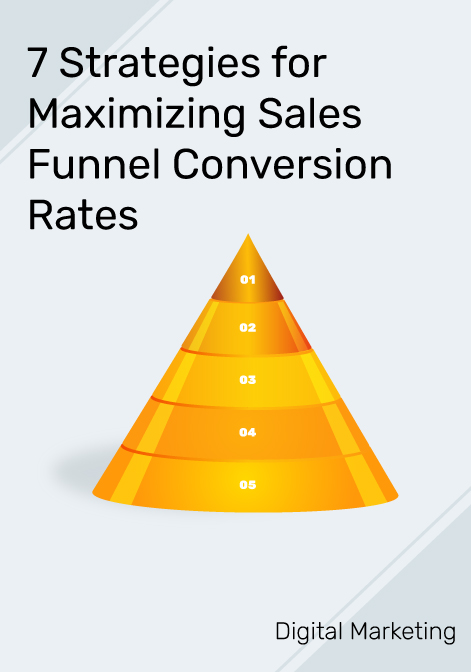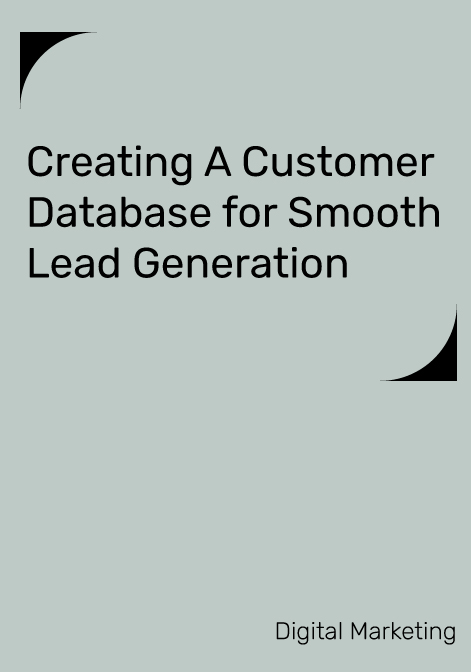Two of the most popular and effective platforms for online marketing are Instagram and Facebook. They are both owned by the same company but have different features, audiences, and goals that make them suitable for different advertising campaigns.
This article will thoroughly analyse Instagram and Facebook ads based on cost, reach, engagement, targeting, formats, and performance criteria. We will also provide some tips and factors to consider when deciding which platform to use for your advertising campaign.
By the end of this article, you will have a clear understanding of the upsides and downsides of every platform and have the option to choose the one that best suits your business needs and objectives.
Ads Cost
The cost is one of the first things to consider when choosing an advertising platform. How much do you have to pay to run ads on Instagram or Facebook? And how much do you get in return?
The cost of advertising on any platform depends on several factors, such as the industry, location, ad type, competition, and bidding strategy. However, generally speaking, Facebook ads tend to have a lower cost per click (CPC) than Instagram ads.
According to a report by AdEspresso, the average CPC for Facebook ads in 2020 was $0.18, while the average CPC for Instagram ads was $0.80. This means you can get more clicks for your budget on Facebook than on Instagram.
However, cost is not the only factor to consider. You also have to look at the click-through rate (CTR) and the percentage of people who click on your ad after seeing it. A higher CTR means your ad is more relevant and appealing to your audience.
According to the same report by AdEspresso, the average CTR for Facebook ads in 2020 was 3.06%, while the average CTR for Instagram ads was 0.68%. This means that Facebook ads are more likely to generate clicks than Instagram ads.
However, these numbers are only averages and can vary depending on the industry, location, and ad type. For example, some industries, such as travel, beauty, or fashion, may have higher CTRs on Instagram than on Facebook because they rely more on visual content.
Therefore, it is vital to track the performance of your ads on both platforms and optimize accordingly to achieve the best results.
Key takeaways:
- Facebook advertising tends to have a lower CPC than Instagram ads.
- Facebook ads tend to have a higher CTR than Instagram ads.
- The cost and CTR of your ads depend on various factors such as industry, location, and ad type.
- You should monitor and adjust your ads based on their performance on each platform.
Ads Reach
Another thing to consider when choosing an advertising platform is the reach. How many people can you reach with your Instagram or Facebook ads? And how does that compare to the size, demographics, and behavior of your target audience?
The reach of your ads depends on the number of users, the frequency of usage, and the level of engagement of each platform. According to Statista, as of July 2021, Facebook had 2.9 billion monthly active users, while Instagram had 1.4 billion monthly active users. This means that Facebook has more than twice as many users as Instagram and an enormous potential reach for your ads.
However, having more users does not necessarily mean having more exposure. You must also consider how often and how long people use each platform. According to a report by eMarketer, in 2020, the average daily time spent on Facebook was 34 minutes, while the average daily time spent on Instagram was 29 minutes. This means that people spend slightly more time on Facebook than on Instagram and, therefore, have more opportunities to see your ads.
However, the frequency and duration of usage are not the only factors that affect the exposure of your ads. You also have to consider how engaged people are with each platform. According to a report by Hootsuite, in 2020, the average engagement rate for Facebook posts was 0.27%, while the average engagement rate for Instagram posts was 1.22%. This means that people are more likely to interact with your ads on Instagram than on Facebook, increasing their visibility and reach.
Therefore, it is essential to understand your target audience’s size, demographics, and behavior on each platform and match them with your advertising goals. For example, if you want to reach a large and diverse audience with a broad message, Facebook may be a better choice. But if you want to reach a specific and niche audience with a tailored message, Instagram may be a better choice.
Key takeaways:
- Facebook has more users than Instagram and a more significant potential reach for your ads.
- Facebook’s users spend slightly more time on the platform than Instagram users and, therefore, have more opportunities to see your ads.
- Instagram’s users are more engaged with the platform than Facebook users and, therefore, are more likely to interact with your ads.
- You should understand your target audience’s size, demographics, and behavior on each platform and match them with your advertising goals.
Ads Engagement
Another thing to consider when choosing an advertising platform is the engagement. How much, and how well, do people engage with your ads on Instagram or Facebook? And how does that relate to your ads’ type, format, and content?
The engagement of your ads depends on the level and quality of interaction people have with your ads, such as likes, comments, shares, clicks, conversions, etc. A higher engagement means that your ads are more effective and successful in reaching your audience and achieving your goals.
According to a report by Smart Insights, in 2020, the average engagement rate for Facebook ads was 0.09%, while the average engagement rate for Instagram ads was 0.96%. This means that Instagram ads are more likely to generate engagement than Facebook ads.
However, these numbers are only averages and can vary depending on your ads’ type, format, and content. For example, some types of ads, such as video or carousel ads, may have higher engagement rates than others, such as image or link ads.
Therefore, it is essential to choose the right type and format of ad for each platform and create engaging, relevant, and appealing content for your audience. For example, if you want to showcase your products or services visually appealingly, Instagram may be a better choice. But if you want to drive traffic to your website or landing page, Facebook may be a better choice.
Key takeaways:
- Instagram ads are more likely to generate engagement than Facebook ads.
- The engagement rate of your ads depends on the type, format, and content of your ads.
- You should choose the right type and format of ad for each platform and create engaging, relevant, and appealing content for your audience.
Ads Targeting
Another thing to consider when choosing an advertising platform is the targeting. How accurately and precisely can you target your ads to your ideal audience on Instagram or Facebook? And how does that affect the performance and results of your ads?
The targeting of your ads depends on the amount and quality of data each platform has about its users, such as their demographics, interests, behaviors, preferences, etc. Better targeting means your ads are more relevant and personalized to your audience and more likely to achieve your goals.
Both Instagram and Facebook have a lot of user data, but they use it differently for targeting purposes. Facebook has more options and features for targeting, such as custom audiences, lookalike audiences, detailed demographics, life events, etc. Instagram has fewer options and features for targeting, but it relies more on the content and hashtags that users follow, like, and comment on.
Therefore, it is crucial to know the characteristics and preferences of your target audience on each platform and use the appropriate targeting options and features for your ads. For example, if you want to target people based on their specific life events or behaviors, Facebook may be a better choice. But if you want to target people based on their specific interests or passions, Instagram may be a better choice.
Key takeaways:
- Facebook has more options and features for targeting than Instagram.
- For targeting, Instagram relies more on the content and hashtags that users follow, like, and comment on.
- You should know the characteristics and preferences of your target audience on each platform and use the appropriate targeting options and features for your ads.
Ads Formats
Another thing to consider when choosing an advertising platform is the format. What are the different types and styles of ads you can create and display on Instagram or Facebook? How do they suit your brand, message, and goals?
The formats of your ads depend on the creative and technical possibilities each platform offers, such as the size, shape, orientation, duration, etc. of your ads. A better format means that your ads are more attractive and effective in conveying your message and achieving your goals.
Both Instagram and Facebook have a variety of formats for your ads, but they have different strengths and weaknesses. Facebook has more formats and options for your ads, such as image ads, video ads, carousel ads, collection ads, instant experience ads, lead ads, etc. Instagram has fewer formats and options for your ads, but it focuses more on the quality and aesthetics of your ads, such as stories, reels, IGTV, and explore ads.
Therefore, choosing the correct ad format is crucial based on your brand, message, and goals on each platform. For example, if you want to create immersive and interactive ads that detail your products or services, Facebook may be a better choice. But if you want to create simple and elegant ads that capture the attention and emotion of your audience, Instagram may be a better choice.
Key takeaways:
- Facebook has more formats and options for your ads than Instagram.
- Instagram focuses more on the quality and aesthetics of your ads than Facebook.
- You should choose the suitable ad format based on your brand, message, and goals on each platform.
Ads Performance
The last thing to consider when choosing an advertising platform is the performance. How well do your ads perform on Instagram or Facebook? And how do you measure and improve their performance?
The performance of your ads depends on the results and outcomes that you achieve with your ads, such as the impressions, reach, clicks, conversions, sales, etc. A better performance means that your ads are more proficient and viable in reaching your audience and achieving your goals.
Both Instagram and Facebook have tools and metrics to help you measure and improve the performance of your ads, such as the Facebook Ads Manager, the Facebook Pixel, Instagram Insights, etc. However, they have different ways of reporting and optimizing their performance.
Facebook has more data and analytics for your ads, such as the relevance score, the quality ranking, the conversion rate, the return on ad spend, etc. Instagram has less data and analytics for your ads, but it provides more feedback and suggestions, such as the best time to post, the best hashtags to use, the best content to create, etc.
Therefore, it is crucial to monitor and analyse the performance of your ads on each platform and use the available tools and metrics to improve them. For example, if you want to track and optimize the conversions and sales of your ads, Facebook may be a better choice. But if you want more ad feedback and suggestions, Instagram may be a better choice.
Key takeaways:
- Facebook has more data and analytics for your ads than Instagram.
- Instagram provides more feedback and suggestions for your ads than Facebook.
- You should monitor and analyze the performance of your ads on each platform and use the available tools and metrics to improve them.
Conclusion
Choosing between Instagram and Facebook for your advertising platform depends on several factors, such as the cost, the reach, the engagement, the targeting, the formats, and the performance of your ads. There is no definitive answer to which platform is better, as both have advantages and disadvantages.
The best way to decide which platform to use is to understand your audience, goals, and budget and match them with the features and benefits of each platform. You can also test and experiment with different ads on both platforms and see which ones perform better for your business.
Ultimately, you can also use both platforms together and create a cross-platform advertising strategy that leverages the strengths of each platform and maximizes your results.
I hope this article has helped you learn more about the differences between Instagram and Facebook for advertising. If you have any questions or feedback, please let me know. Thank you for reading! 😊




